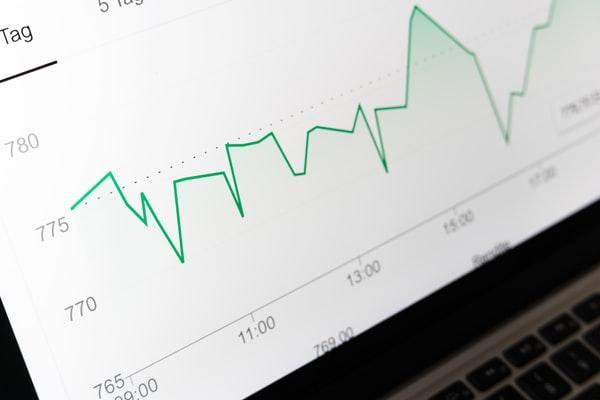Businesses these days are collecting and working with more data than ever before. Simply put, data is a collection of facts and figures. It can be anything from customer contact information to sales figures to website analytics. Understanding data is essential for businesses because it can help them make better decisions, identify trends, and understand what’s working and what isn’t.
When it comes to understanding your company’s important data, visualization techniques are among the most effective methods. There are many different types of data visualization, including bar charts, pie charts, scatter plots, and line charts. Keep reading to learn more about line charts, including how to use a line chart.
What is a line chart?
A line chart is a type of graph that shows how a particular variable changes over time. It consists of a series of data points connected by straight lines, which can be used to track the progress of a particular variable over a period of time. Line charts are often used to track the progress of stocks, share prices, or other economic indicators.
There are several variants of line charts, including:
- Multi-series line chart: A multi-series line chart is a graphical representation of data that is organized in multiple series. Each series is represented by a line on the chart, and the data for each series is plotted against a common x-axis. Multi-series line charts are often used to compare data between different time periods or different groups.
- Multi-axis line chart: In this chart type, the data is displayed on two or more axes. The axes are perpendicular to each other, and the data is displayed as a series of points connected by lines. Multi-axis line charts can be used to compare different sets of data or to visualize changes in data over time.
- Step-line chart: In a step-line chart, the data points are determined by the distance between successive points on the line. The step line chart is used to visualize the change in a data set over time.
- Zoom line chart: A zoom line chart is a digital type of chart that allows you to zoom in on a specific area of the chart to get a more detailed view. This can be useful for analyzing data that is spread out over a large area or for viewing data that changes over time.
- Scroll line chart: In a scroll line chart, the x-axis represents time while the y-axis represents some measurement. The data is displayed as a line that can be scrolled through as time progresses.
- Spline chart: In a spline chart, the data is plotted on a graph, with each data point represented by a dot. A smooth curve is then plotted through the dots, representing the variation of the data. Spline charts are often used to show data that varies over time, such as sales figures or stock prices.
Each of these line chart types can help you visualize your data in a new way to identify important trends and patterns, but there are a few things to keep in mind when creating line charts. First, make sure the data is properly formatted and cleansed before graphing it. Also, be sure to use a scale that makes sense for the data. For example, if the data is measuring sales in dollars, use a scale that starts at zero and goes up to a maximum value that represents the largest sales amount. Finally, always use a title and labels to help explain the data.
Why should you use a line chart?
Line charts are an efficient way to track changes in data over time. They are simple to understand and can be used to track a variety of data points. When used in business, line charts can help track sales data, profits, or any other metric that changes over time.
Line charts are also a good way to track trends. By comparing different data points, businesses can see if a trend is increasing or decreasing. This information can help businesses make better decisions about where to allocate their resources.
Additionally, line charts are a good way to track goals. If a business has set a goal for a certain metric, it can use a line chart to track whether or not they are reaching that goal. This information can help businesses make adjustments to their strategy in order to achieve their desired outcome.
Further, line charts are a great way to present data to stakeholders. When used correctly, line charts can help make data easy to understand and visualize trends. This can help businesses make a strong case for their decisions and strategies.
Overall, line charts are a very useful tool for business success. They can help you track a variety of different data points over time and make changes to your business strategy accordingly.
